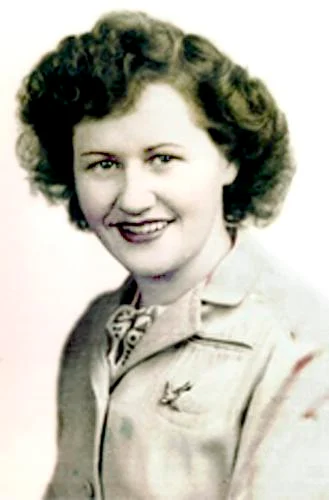
For International Women’s Day on March 8th, Benna Ford takes a moment to recognize the most famous factory worker in Ford’s history; “Rosie the Riveter,” the bandana-wearing, arm-flexing young woman proclaiming “We Can Do It!” who worked in the Ford Willow Run factory in Michigan. She became the symbol of women factory workers across the country who were making the machinery their husbands and brothers would use to win the second World War, and later became an icon of women empowerment.

Rose Will Monroe was born in Pulaski County Kentucky in 1920, as one of nine children. After her husband was killed in a car accident, she moved to Michigan with her two young children to take a job at the Willow Run plant that Ford had built to assemble B-24 Liberator bombers. The 332-acre facility was the largest manufacturing operation in the world and employed over 40,000 workers. It produced over 9,000 B-24 Liberators, and by 1944 planes were coming off the line at the rate of one every hour.
Moved to Michigan as a Widow and Mother

By the time she moved to Michigan, a 1942 song “Rosie the Riveter” was already popular on the radio about a dedicated wartime female factory worker. During the war, actor Walter Pidgeon came to Willow Run to shoot footage for a film promoting the purchase of war bonds. When he found there was an actual woman named Rose working as a riveter there, he asked Monroe to be part of the film. From there Monroe became the face of “Rosie the Riveter” and is the inspiration if not the exact likeness of the famous “We Can Do It” poster.
Monroe’s dream at the time was to become a pilot to transport aircraft parts around the country. Unfortunately, her status as a single mother denied her the training. Though she experienced some “Rosie” notoriety after her appearance in the film, she chose not to further capitalize on her fame. After the war, Monroe left the factory and worked as a cab driver, operated a beauty shop, and launched a luxury home construction company known as Rose Builders. Monroe eventually did get her pilot’s license in 1970 and flew until 1978. Leaving a legacy for women to stand forth, Rosie passed away on May 31, 1997, in Clarksville, Indiana, at the age of 77.
“Rosie the Riveter” in its song, film, and poster forms, inspired a social movement that increased the number of working American women from 12 million to 20 million by 1944. In 1942, between the months of January and July, the estimates of the proportion of jobs that would be “acceptable” for women was raised by employers from 29 to 85%, and 4.1 million unmarried women between the ages of 20 and 34 worked in the defense industry
The “Rosie” Heritage

Of course, most of the women lost their factory and other traditionally “male” jobs after the war, as they were expected to make room and employment opportunities for the returning veterans. Most assumed domestic life or returned to traditionally “female” roles in the workplace. By contrast, the Rosie the Riveter poster has become a feminist symbol as it perfectly encapsulates the fact that women can, in fact, do work once thought to only be within the abilities of men. The proof was undeniable and it provided support for a subsequent generation of women not content with traditional female employment opportunities.
The automotive industry has long been male-dominated, but it doesn’t need to be. The present 13 members of the Benna Ford staff all play crucial roles in keeping the business running smoothly, and we are always on the lookout for talented employees of any gender. In the meantime, this March 8th, and we will be looking to “Rosie the Riveter” and all the other women who have inspired us and made history.










